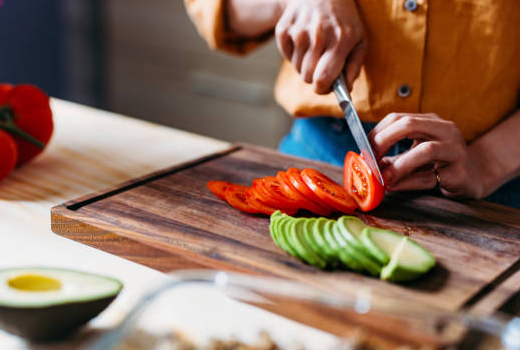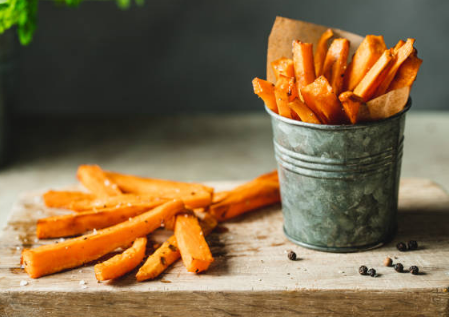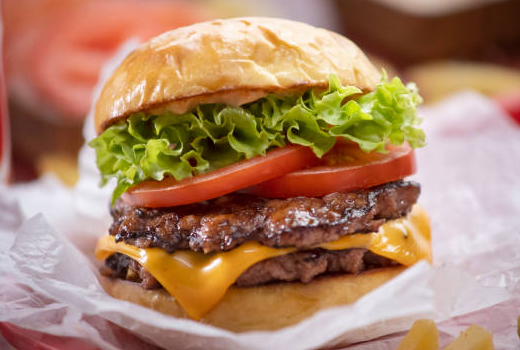Why You Should Regularly Oil Your Wooden Cutting Board

Sahale Snacks Glazed Variety: Elevate Your Snacking Experience with Irresistible Flavors
April 23, 2025
How to Safely Light a Gas Grill
April 28, 2025After a long day’s work, it’s tempting to take shortcuts when preparing dinner (does the food really need to rest before serving?). Many culinary experts might shake their heads at this, but there’s one step you absolutely shouldn’t skip when prepping meals: oiling your wooden cutting board.
If you haven’t yet made the switch to wooden kitchen items, now’s a great time. Wooden cutting boards are beautiful and a fantastic alternative to easily worn-out plastic boards. Plus, they effortlessly complement other kitchen decor and can enhance any interior style. They look stunning displayed on kitchen shelves alongside colorful appliances or vases, and when you entertain guests, they double as serving boards or charcuterie platters.
But there’s nothing worse than serving delicious cheeses and vegetables on a cracked, splitting, or faded cutting board. Here’s how to ensure you never have to deal with a dry, grubby wooden cutting board again.

Why Oil Your Cutting Board?
According to TikTok creator @jessica_tom, oiling your cutting board prevents the wood from drying out and cracking, and it helps reduce the wood’s permeability. Essentially, if you don’t oil your cutting board, the wood becomes more porous, and food debris and liquids can get trapped beneath the surface. This creates a breeding ground for bacteria, which can then transfer back into your food the next time you use the board.
How to Oil Your Cutting Board
No matter how old your cutting board is, or if you’ve never oiled it before, it’s never too late to add this conditioning step to your cooking routine.
First, always wash the board with mild soap and let it dry completely. You can towel-dry it or let it air dry for at least an hour. You can also clean the board with lemon and a little baking soda.
Once your cutting board is clean, get your oil ready. While you might have oils on hand, never use olive oil or any vegetable oil to oil a wooden cutting board, as they can go rancid over time. This not only creates an unpleasant odor but can also affect the taste of the food you’re cutting or serving.
Instead, apply mineral oil or an organic wax like beeswax to your wooden cutting board. You can find affordable, cutting-board-specific mineral oil on Amazon or at most large retailers. Simply drizzle some oil over the entire board and rub it in with a dry paper towel. Let it sit for about an hour, then wipe off any excess oil with another paper towel. After a long day, it’s tempting to take shortcuts in the kitchen when dinner prep rolls around. But while some culinary experts might scoff at skipping a food resting period, there’s one step you absolutely shouldn’t miss when it comes to meal prep: oiling your wooden cutting board.
If you haven’t yet embraced wooden cutting boards, now’s a great time to make the switch. They’re beautiful, durable alternatives to easily worn-out plastic boards, and they effortlessly blend with any kitchen decor. They look fantastic displayed on kitchen shelves, complementing colorful appliances or vases, and they can even double as serving platters or charcuterie boards when you’re entertaining.
But nothing ruins the presentation of a beautiful cheese and veggie spread like a cracked, split, or faded cutting board. Here’s how to make sure you never face a dry, drab wooden cutting board again.
Why Should You Oil Your Cutting Board?
Oiling your cutting board prevents the wood from drying out and cracking, and it helps reduce the wood’s permeability. Think of it this way: if you don’t oil your cutting board, the wood becomes more porous, allowing food particles and liquids to get trapped beneath the surface. This creates a breeding ground for bacteria, which could then transfer to your food the next time you use the board.
How to Oil Your Cutting Board
No matter how old your cutting board is or if you’ve never oiled it before, it’s never too late to add this conditioning step to your cooking routine.
First, always wash your board with mild soap and let it dry completely. You can towel dry it or let it air dry for at least an hour. You can also clean it with lemon and a little baking soda.
Once your cutting board is clean and dry, get your oil ready. While you might have cooking oils on hand, never use olive oil or any vegetable oil to oil your wooden cutting board. Over time, these can go rancid, leading to an unpleasant smell and potentially affecting the taste of the food you’re cutting or serving.
Instead, apply food-grade mineral oil or an organic wax like beeswax to your wooden cutting board. You can find affordable, cutting board-specific mineral oil on Amazon or at most large retailers. Simply drizzle some oil over the entire board, then rub it in with a dry paper towel. Let it sit for about an hour, then wipe off any excess oil with another paper towel.



